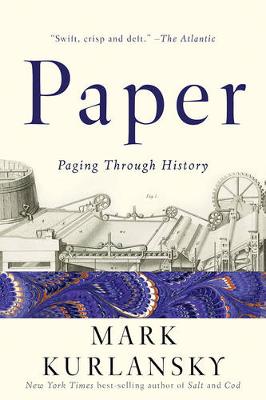8%OFF

Stock image for illustration purposes only - book cover, edition or condition may vary.
Paper: Paging Through History
Mark Kurlansky
€ 19.99
€ 18.37
FREE Delivery in Ireland
Description for Paper: Paging Through History
Paperback. From the The New York Times best-selling author of Cod and Salt, a definitive history of paper and the astonishing ways it has shaped today's world. Num Pages: 416 pages, 24 illustrations. BIC Classification: HBG. Category: (G) General (US: Trade). Dimension: 210 x 140. .
For the past two millennia, the ability to produce paper in ever more efficient ways has supported the proliferation of literacy, media, religion, education, commerce and art. It has created civilisations, fostering the fomenting of revolutions and the stabilising of regimes. Now, on the cusp of going paperless , Mark Kurlansky challenges common assumptions about technology's influence, affirming that paper is here to stay.
For the past two millennia, the ability to produce paper in ever more efficient ways has supported the proliferation of literacy, media, religion, education, commerce and art. It has created civilisations, fostering the fomenting of revolutions and the stabilising of regimes. Now, on the cusp of going paperless , Mark Kurlansky challenges common assumptions about technology's influence, affirming that paper is here to stay.
Product Details
Publisher
WW Norton & Co
Format
Paperback
Publication date
2017
Condition
New
Number of Pages
416
Place of Publication
New York, United States
ISBN
9780393353709
SKU
V9780393353709
Shipping Time
Usually ships in 7 to 11 working days
Ref
99-1
About Mark Kurlansky
Mark Kurlansky is the New York Times best-selling author of twenty-eight books and a former foreign correspondent for The International Herald Tribune, The Chicago Tribune, The Miami Herald, and The Philadelphia Inquirer. He lives in New York City.
Reviews for Paper: Paging Through History
Kurlansky's book is published with a deckle edge finish, a process that replaces the regular clean-cut trim of a page with a jagged, pulped roughness... It is a beautiful thing to hold and feel, and it presents a fine argument for the retention of paper as an aesthetically lusty object, let alone one that's thrived through centuries of change. ... Read more
